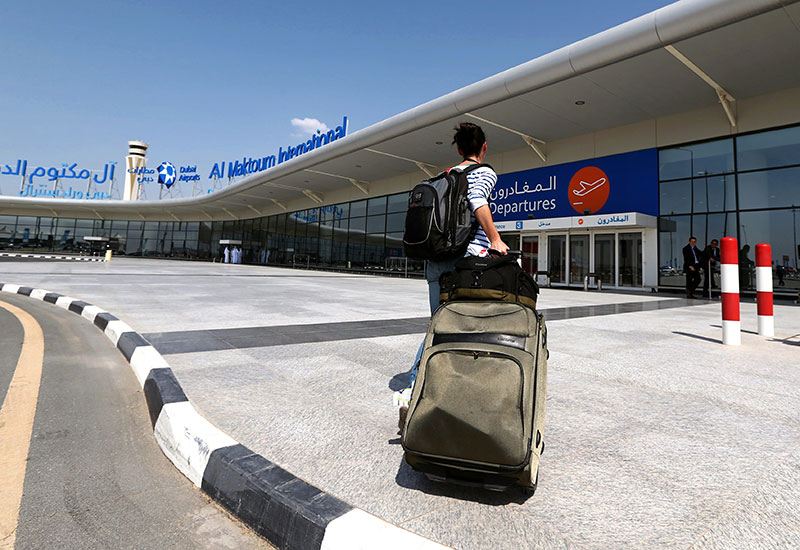Despite the free-falling Indian rupee, there is confidence among hoteliers in Dubai that the flow of visitors from one of the Middle East’s key markets will not have a major impact on the region’s hospitality sector.
The Indian rupee’s downward trend continued in September, falling to a new low against the US dollar and UAE dirham. The rupee, which was at around Rs 61.7 against the dollar in January 2015 stood at Rs 72.78 to the dollar mid-September 2018, according to statistics from Xe.com.
However, hoteliers are not concerned about the possible negative impact on tourism caused by the falling rupee. It is worth noting that during the past few months the dollar has strengthened against almost every currency, meaning that global currencies have weakened vis-a-vis the dollar, be it the Indian rupee, Turkish lira or Indonesian rupiah.
It’s undeniable that India is important to the UAE’s tourism sector. Bollywood superstar Shah Rukh Khan is the face of Dubai Tourism’s #BeMyGuest campaign. The videos were released on YouTube and Khans Twitter account earlier this year and have over 1.5 million views collectively. Dubai has seen approximately 4.7 million international visitors in the first quarter of 2018, a 2% increase over the same time period last year, according to new figures from Dubai’s Department of Tourism and Commerce Marketing. In the first half of the year alone, more than a million Indian tourists have visited the emirate, a 3% year-on-year increase.
A survey, conducted by Indian online travel website yatra.com, showed that out of its 1,592 respondents, 66% were planning to travel for seven days or less, but travel frequently, and 43% of those respondents were millennials.

| Advertisement |
ATM senior exhibition director Simon Press said in a statement earlier this year that “in terms of short break deals and offers, this is sure to alert travel professionals and hoteliers throughout the GCC, being in such close proximity to their Indian neighbour."
“The travel time from Mumbai to Dubai, in particular, is just over three hours, and from Mumbai to Muscat, just under three hours, putting both cities on the radar as prime short break destinations,” Press added.
According to Dubai Tourism, there was a 7% increase in the number of Indian visitors to 617,000 in the first half of 2018.
Sameer Bagul, executive vice president and managing director, Cleartrip Middle East said in an interview with Hotelier Middle East that his firm has not “seen a marked impact of the depreciation of the Indian rupee against the US dollar, because airlines and hotels have adjusted the prices of their offerings, taking into account the currency fluctuations.”
Bagul added that this has helped to maintain the inflow of Indian tourists to the UAE.
Most Dubai hoteliers have agreed with Bagul’s assessment.
Kiran Kumar, director of marketing, Le Meridien Dubai, said: “India is an important market for our business in terms of rooms, events and weddings. There is no visible impact on our business due to the fall of rupee value. With our aggressive sales and marketing strategy we are pacing well in various segments influenced by the subcontinent this year”
According to Fairmont Dubai director of sales & marketing, Valerie Vayssiere, Fairmont Dubai has witnessed a steady influx of Indian travellers throughout summer and does not foresee the footfall to decline despite the falling rupee.
“In order to attract more business to Fairmont Dubai, we are currently focusing on offering much more tailored packages to our key feeder markets, including India. Furthermore, we are also hosting DMCs from India for familiarisation trips and conducting regular visits to the country itself,” she said.
However travel agency, Cox & Kings India, has said the 12% fall of the rupee in the past eight months has failed to dampen the spirit of Indian globetrotters opting for dollar destinations as they are very calculative and understand currency fluctuations, keeping a significant buffer while budgeting their travel.
However a sustained decline in the value of the currency will bring some pressure on the travel industry, Bagul said.
A survey done by travel portal Yatra.com found that close to 66% of Indian travellers would avoid taking an international holiday if the rupee touched 68, while over 89% were ready to go on an overseas trip if the rupee climbed back to 61.
The fall of the rupee, however, may ultimately prove beneficial to India’s hotel industry by encouraging an influx of foreign visitors, according to experts.
In August this year, Indian ambassador to the UAE, Navdeep Singh Suri told Hoteliers sister title Arabian Business that the weakness of the Indian rupee could signal a 10% increase in inbound tourism.
Speaking on the sidelines of a press conference announcing the upcoming Indian-UAE Partnership Summit (IUPS) in Dubai, ambassador Suri said that he expects the exchange rate makes India an increasingly attractive option for visitors from the UAE and the Gulf.
“It’s the right time to travel to India, absolutely,” he said. “India has suddenly become a much more affordable destination.”









 Search our database of more than 2,700 industry companies
Search our database of more than 2,700 industry companies









